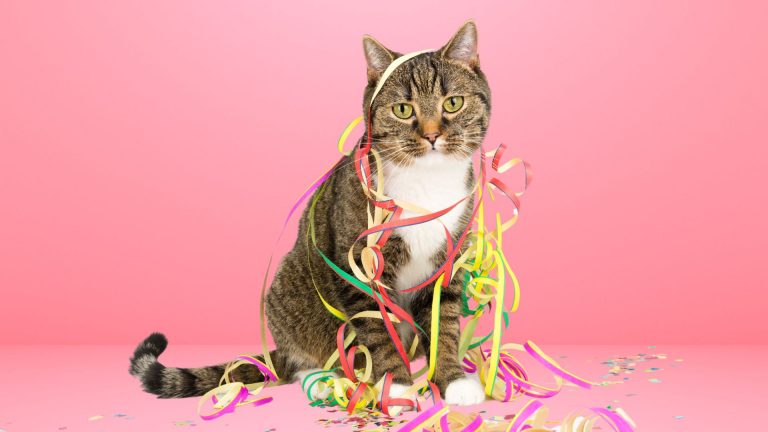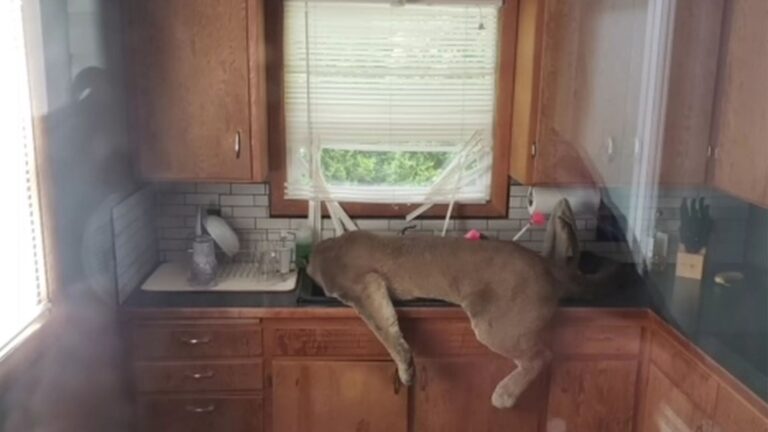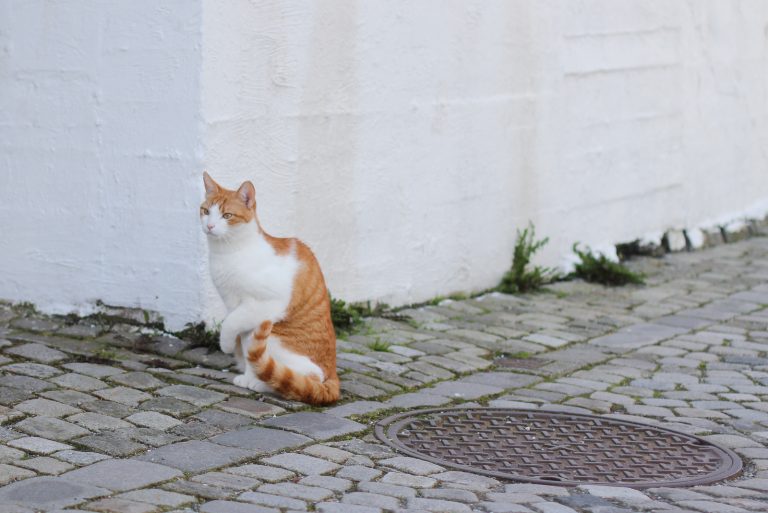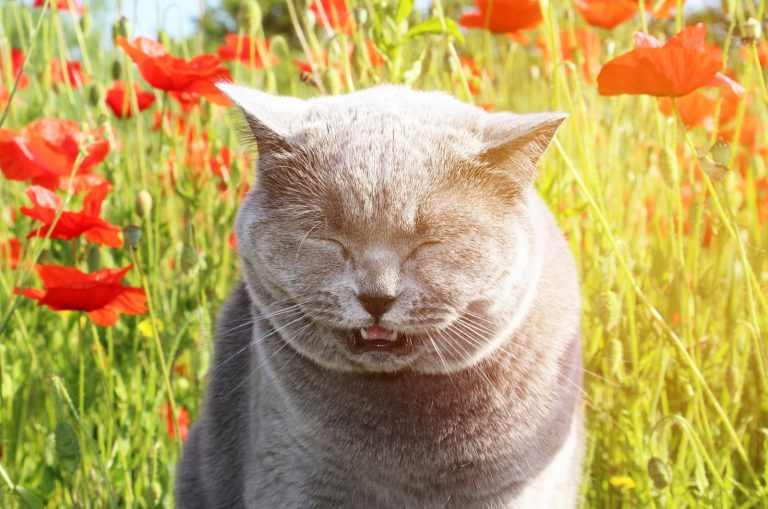Hard Growth On Cat Paw Pad – What Is It And How To Deal With It?
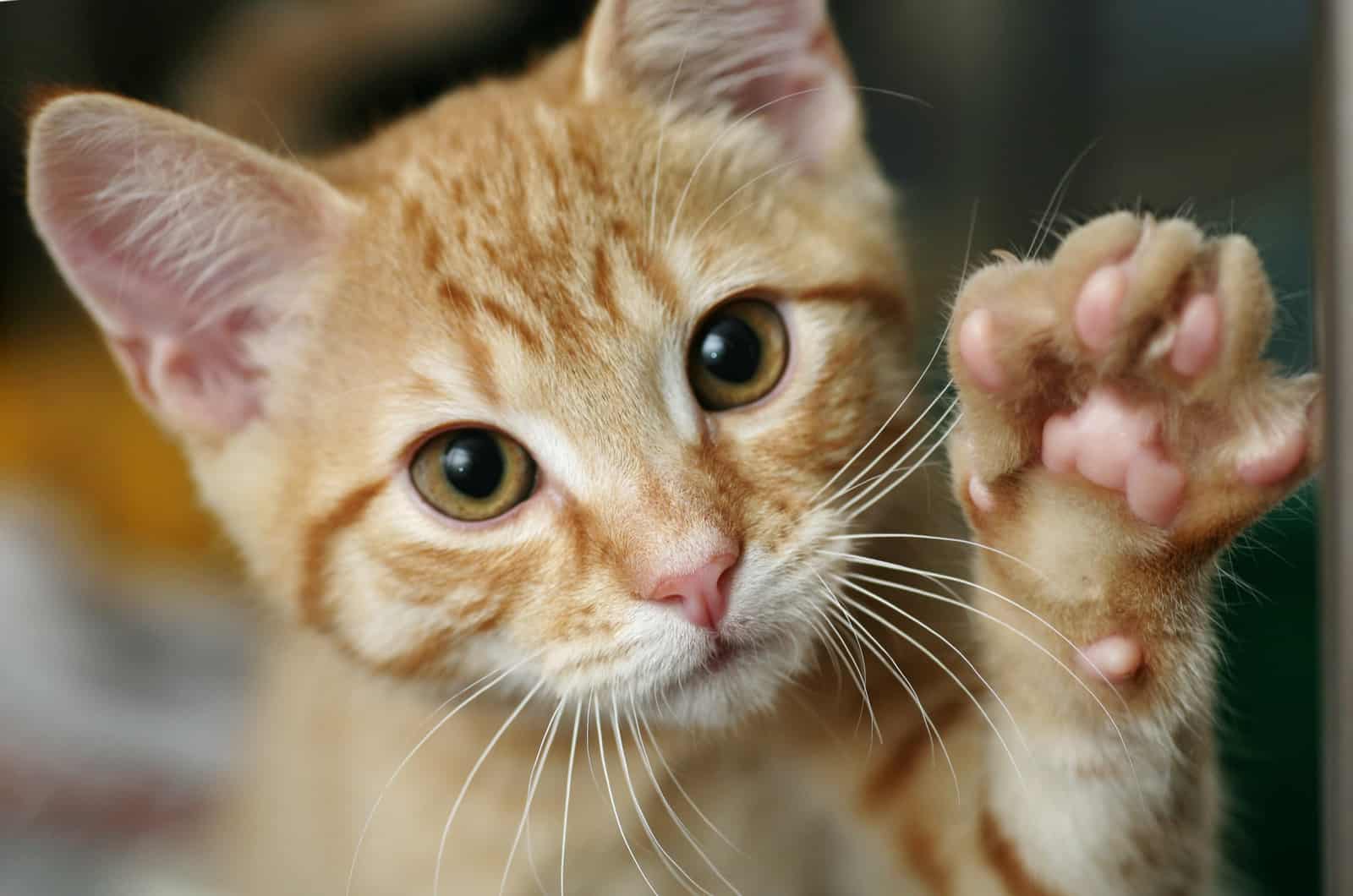
If you ever spotted a hard growth on cat paw pad you were probably worried, especially for the first time. However, it’s a common condition in cats, and it’s not serious as long as your cat doesn’t show any symptoms.
There are a few possible causes for this particular condition, as well as treatment options that depend on the seriousness of the condition.
Since you’re here, you’re probably not familiar with this condition. So, if you’d like to learn more, such as what is a hard growth on cat paw pad, what are the possible causes, is it painful for your feline, or similar, then read the article and find out everything you need to know about it!
What Is A Hard Growth On A Cat Paw Pad?
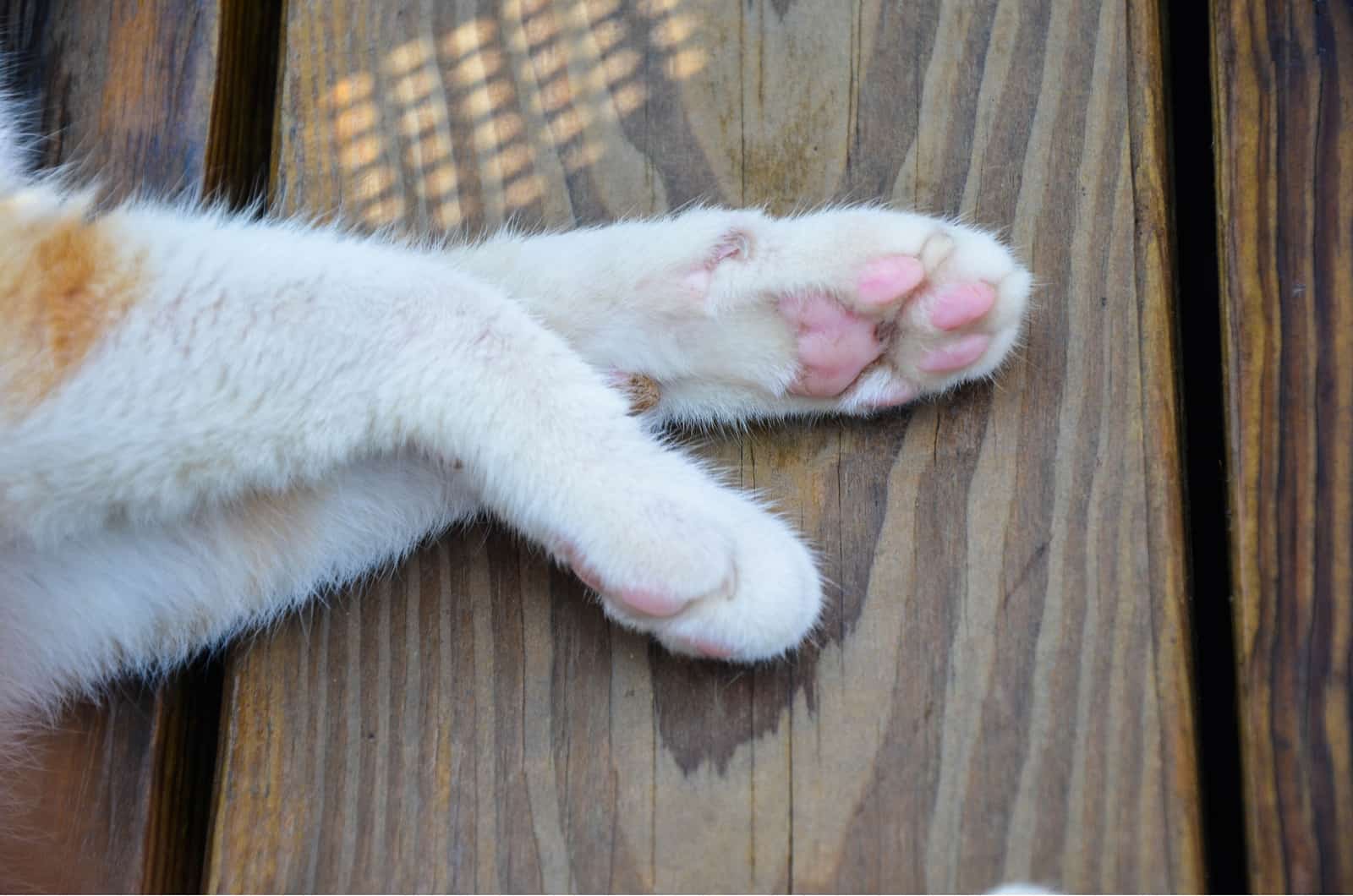
A hard growth on cat paw pad is a skin condition that is common in cats. Sometimes, it’s hard to recognize, and cat owners may only notice it when trimming a cat’s nails.
These hard growths may vary from smaller to bigger growths that usually affect the front of the toe pad, but it can also affect the bottom of the paw pad.
Moreover, these hard growths can appear on body parts other than the cat’s paw pads. Even though it’s not an alarming condition, you should inspect your cat and know what to look for with these hard growths.
Preventively, you can contact your veterinarian to inform them and consult about the cat’s condition. Besides that, this condition should be monitored in order to react if certain side effects appear.
What Is A Cutaneous Horn?
A cutaneous horn is another name for a hard growth on cat paw pad. So, it’s a common feline skin condition that is not alarming.
These horns may usually grow on the skin surface and are barely noticeable, but they may also grow bigger or in groups. Besides the footpads, cutaneous horns may appear on other body parts of a cat.
The reason why these hard growths are also called cutaneous horns is that they look like horns. They usually grow thick up to the nails and therefore are sometimes mistaken for a second nail.
As stated, this condition is not dangerous for your cat, but it does require special attention so that you can react quickly if certain side effects appear.
The best thing would be to inform your veterinarian if you notice these growths and follow his instructions.
But, that’s not it, we’re just getting started, so read on to find out more about this condition, what causes it, and how to know when to react!
The Possible Causes Of Hard Growth
The exact cause of the development of the cutaneous horn in cats isn’t fully known. However, there are a few possible causes that may trigger the development of this hard growth on the cat’s footpad.
The causes may vary from less serious conditions to more serious ones. Though this condition is not usually that serious, it’s still important to determine the underlying cause in order to stop or reduce this growth.
Be aware that this skin condition may be triggered by serious health issues that need to be recognized in order to be treated properly.
Moreover, these hard growths are more common in indoor cats as they don’t have much space for different activities, especially climbing or scratching, so you’ll need a proper solution for that.
So, let’s take a look at these possible causes of hard growth on cat paw pad!
Keratin

The overgrowth of keratin is one of the most common causes of the development of hard growth on a cat paw pad. It’s a protein that is important for the skin, nails, and hair.
An imbalance of keratin in the cat’s system – much like in our own – may cause different issues.
The lack of keratin may cause loss of hair, nail breakage, skin damage, and other issues. But also, if the body is producing more keratin than necessary, it may lead to conditions such as cutaneous horn and other hard growths over the body.
What Is Hyperkeratosis?
The above–mentioned condition is called hyperkeratosis. Hyperkeratosis is a condition where the cat’s body produces more keratin than is needed, leading to thickening of the skin, that is hard growths, especially on the cat paw pads.
There are two possible reasons for hyperkeratosis. The first one is the overproduction of the keratin which triggers the development of horn–like growths. The other reason may be due to genetics.
So, just like people may have different skin conditions due to their genetics, the same way cats may develop hard growths because of their genetics.
Cysts
Cysts are also one of the possible causes for the development of the hard growth on cat paw pad.
Cysts will usually trigger the hard growth if it starts leaking fluid. After some time, the fluid will harden up and combine with dead skin cells, which results in the hardening of the skin in the particular places where the cysts occurred.
If you notice your cat developing cysts, you should consult with your veterinarian in order to prevent the cysts from leaking fluid and causing the hard growth on your cat’s skin.
Calluses
Calluses may appear due to the friction or constant rubbing of the cat’s paw pads. This may result in the build up of the hard growth on cat paw pads to the point where you can even hear it. Also, in this case, the best thing to do is to contact your vet and follow their instructions.
More Serious Causes
More serious causes of the cutaneous horn may be serious diseases that are common in cats, such as:
• Papillomavirus Infection
• Feline Leukemia (FELV)
• Squamous Cell Carcinoma
So, even though cutaneous horns are not serious, your cats should be checked in order to find the underlying cause as it can be one of the listed conditions;these conditions require special attention.
Usually, when a cat has this problem, it needs to be tested for Feline Leukemia (FLV) or the vet has to do a biopsy in order to discover if the underlying cause is Squamous Cell Carcinoma, especially if skin lesions are noticed along with the horns.
These serious health issues are followed by particular side effects which make it easier to recognize the possible problem.
The side effects that may follow these issues are loss of appetite, vomiting, mouth bleeding, diarrhea, fever, breathing difficulties, lethargy, and/or weakness.
Therefore, if you notice such symptoms along with hard growth on cat paw pad, then you should immediately contact your veterinarian!
Are There Any Side Effects?

As far as the cutaneous horns are concerned, there are no serious side effects except sounds while your feline’s walking. However, it’s completely harmless.
But, as mentioned previously, cutaneous horns caused by serious health issues may have concerning side effects such as vomiting, diarrhea, breathing difficulties, fever, loss of appetite, mouth bleeding, lethargy, and/or weakness. If such symptoms are noticed, it means that your cat needs special attention.
Is Hard Growth On Cat Paw Pad Painful?
Usually, a hard growth on cat paw pad isn’t painful for cats and it won’t affect their activities. However, if the growth breaks, it may be painful for cats and cause them trouble with moving around and climbing.
Be sure to monitor your cat’s behavior for limping or licking the paw pads excessively, which should prompt you to contact your vet to seek solutions to the problem.
Moreover, if the growth on the footpads breaks or a cat gets injured, besides the pain, the pads may get easily infected and lead to other problems.
What Should I Do With My Cat’s Cutaneous Horns?
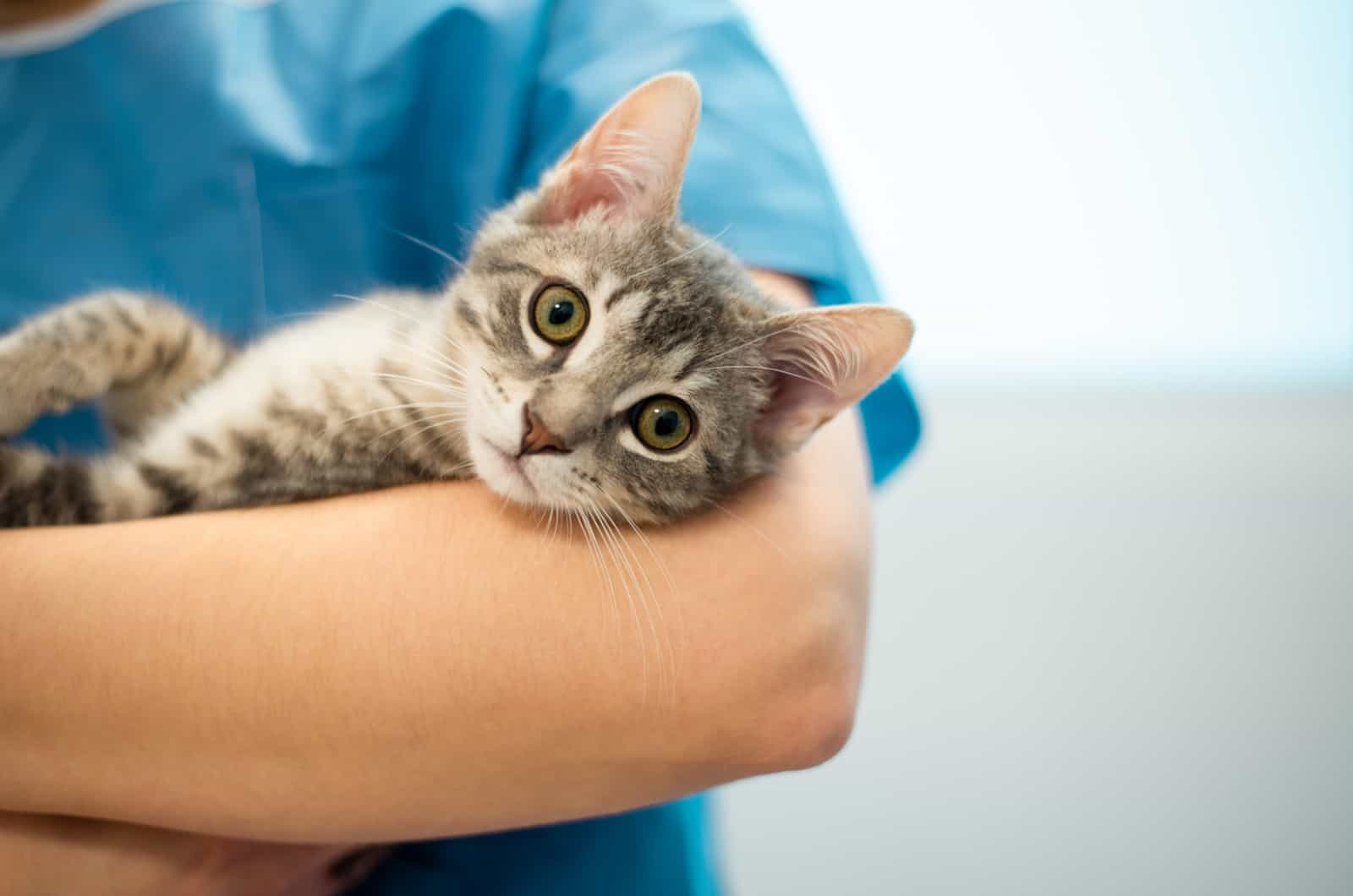
As long as horned paws don’t cause your cat pain and discomfort you don’t have to do anything. However, you can try using pet–friendly moisturizers in order to try to soften the paw pads, but that won’t prevent further growth or reduce the current growth.
Another good thing is to wash your cat’s paws carefully, thus preventing bacterial infections.
Do They Need Removal?
If horned paws aren’t causing pain, lameness, or discomfort for your feline, they don’t have to be removed.
However, if this isn’t the case, then you should consult with the veterinarian about the problem as there are few options concerning the growth removal that I’ll discuss later in the article. So, read on to find out more!
Is It A Good Idea To Trim Cat’s Cutaneous Horns?
Cat’s cutaneous horns can be trimmed with clippers just like a nail trim, however, it’s not the best idea to do it yourself.
Cutaneous horns are just a hard growth, and you cannot hurt your cat by trimming the growth as they don’t contain blood vessels.
But if you want to trim the growth from the paw pads, make sure you first consult with the vet in order to establish that the growth is definitely a cutaneous horn and not a tumor or something serious that can cause further issues, such as bleeding or disrupting the tissue.
So, if the horned paws don’t affect your cat’s mobility or activities in general, you don’t have to trim them.
Surgical Removal
Surgical removal of the horned paw is only an option if the vet approves. That’s usually when they’re painful, affecting their mobility and other activities, when they grow rapidly, or when they’re a result of serious diseases.
In order to prevent regrowth in the future, the vet will cut out the base of the growth. After the operation, you need to monitor the healing progress and go to the vet for a check–up, if necessary.
The vet may also prescribe azithromycin for pain relief while your feline’s recovering from surgery.
Is It Possible For Cutaneous Horns To Fall Off?
Whether the cutaneous horn falls off depends on whether a cat is outdoor or indoor.
Outdoor cats have a better chance of cutaneous horns falling off because they’re more active and they move around on different surfaces which can influence cutaneous horns falling off.
However, this is not the case with indoor cats because they’re less active than outdoor cats. This is why you should provide your feline with scratching posts, which is how most cats trim their nails and possible growths.
A Cat’s Horned Paw Swelling – Possible Reasons
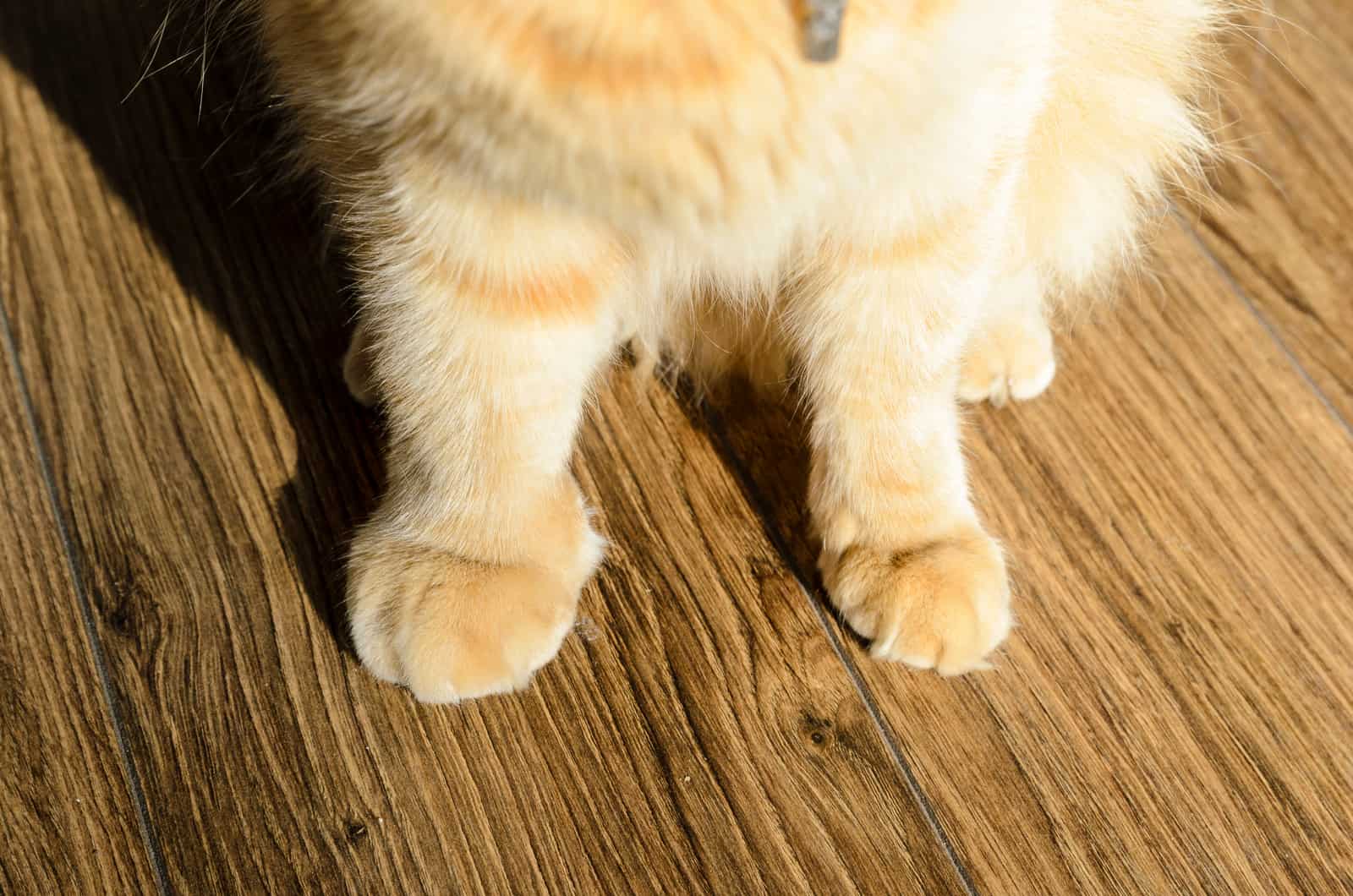
We’ve already discussed the fact that horned paws aren’t usually painful for cats. However, this may not always be the case, and it’s not an unusual thing for a cat’s horned paw to swell. Well, there are a few things that may cause swelling. If you want to find out, then read more!
Plasma Cell Pododermatitis
Plasma Cell Pododermatitis also known as “pillow foot” is a condition that causes serious inflammation to the cat’s pads. Usually, it is treated with doxycycline or other steroids.
In this condition, there’s a chance of forming ulceration on the cat’s front paws. If that happens, the most likely solution is surgery.
Injury
There are also different injuries that may be the cause of a cat’s horned paw swelling, such as:
• Abscesses – abscesses may occur due to bacteria. Cat’s mouths are usually full of bacteria so this can happen, especially when cats are fighting with each other.
• Punctures – it may happen due to stepping on something sharp, causing the cat’s paw to swell.
• Fractures – different fractures may occur in both outdoor and indoor adult cats, due to different accidents.
• Foreign objects – objects such as broken glass, for example, may get stuck in your cat’s paw causing swelling and may also lead to an infection.
• Sprains – this may happen due to a bad landing after a jump or similar, after which a cat may sprain its leg.
Nail growth
Nail trimming is very important for a cat’s claws. They trim their nails on rough surfaces or scratching posts if they have any.
Otherwise, their nails have to be trimmed with a clipper by you or a specialist. If not, their nails may overgrow, risking them getting injuries and infections that may lead to swelling of the paw pad.
Insect Bites And Stings
Cats have always been intrigued by insects. Their curiosity may lead them to be bitten ot stung on the paw, which can cause a swelling reaction.
How To Treat Cat’s Horned Swollen Paw?
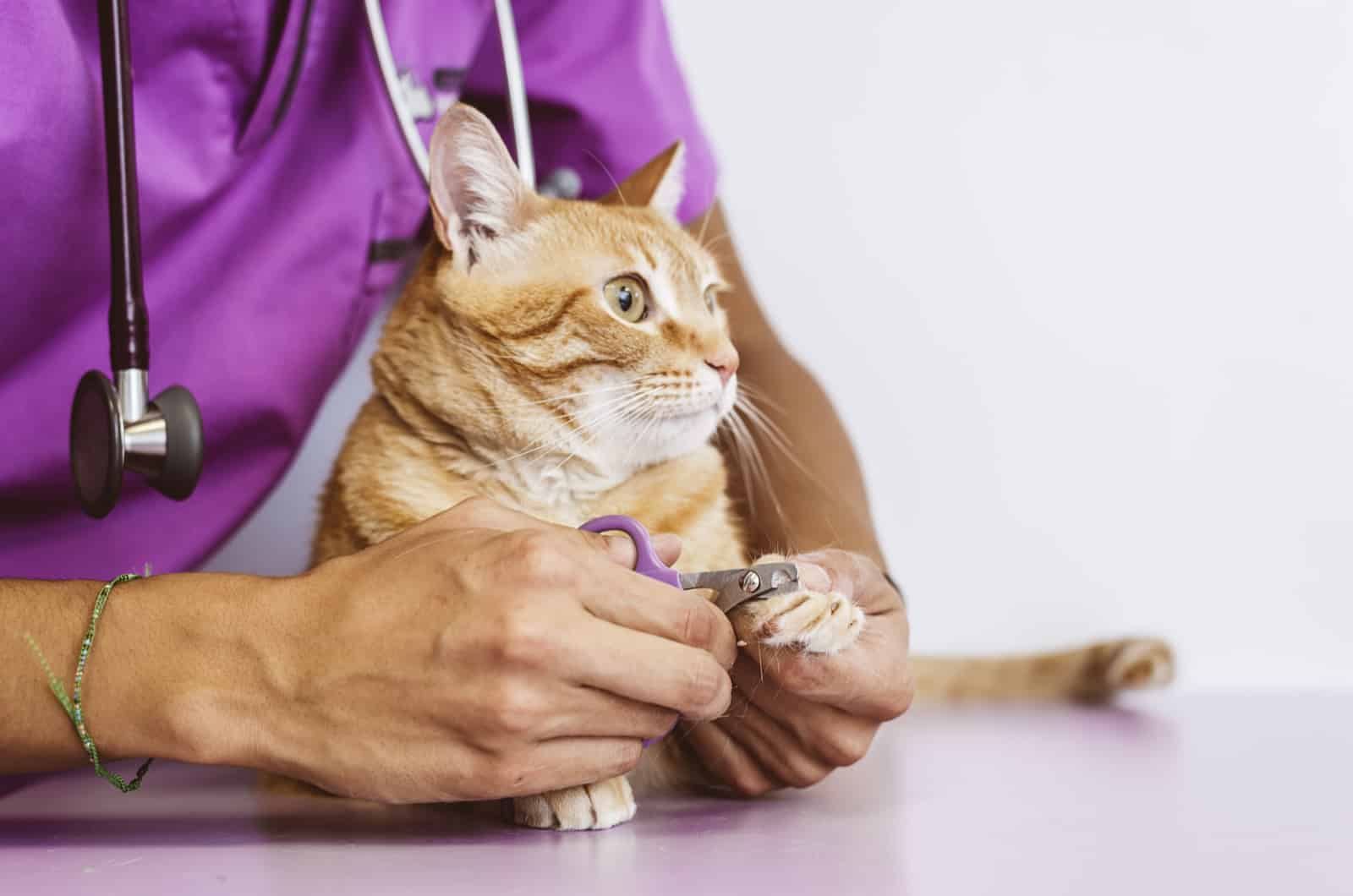
The treatment of the cat’s horned swollen paw depends on the underlying cause. If you notice that your cat’s paw is swollen, the best thing to do is to take your feline to the veterinarian for a check-up.
The vet will definitely know what’s the best thing to do. For example, if the swollen paw is a result of an abscess or infection, the vet will probably prescribe certain antibiotics and other medications for that particular problem.
However, if the swelling is caused by a fracture, it’s most likely that surgery will be required. Besides that, you need to pay special attention to your feline friend in this condition.
Make sure you keep it indoors and monitor their recovery. Most importantly, make sure her litter box is always clean in order to prevent further infections.
FAQ
What Causes Cutaneous Horns In Cats?
There are a few things that may cause cutaneous horns in cats, but the most common one is the overgrowth of keratin. Keratin is a protein that is important for the skin, nails, and hair.
If the body is producing more keratin than necessary, it may lead to conditions such as cutaneous horn and other hard growths over the body.
Besides that, some cats may grow cutaneous horns due to their genetics.
Can You Trim A Cutaneous Horn?
Yes, you can trim a cutaneous horn. However, as long as it doesn’t cause your cat pain and discomfort, it’s not necessary. In addition, if you want to trim it, it would be best to consult with your vet first.
What Is The Treatment For Cutaneous Horns?
There are two most common treatment options, and they are trimming the hard growth and a surgical removal of the cutaneous horns. Surgical removal is necessary only if it causes your cat pain.
The hard growth may fall off in outdoor cats as they’re more active and they move around on different surfaces, however, that’s not the case for indoor cats.
Final Thoughts
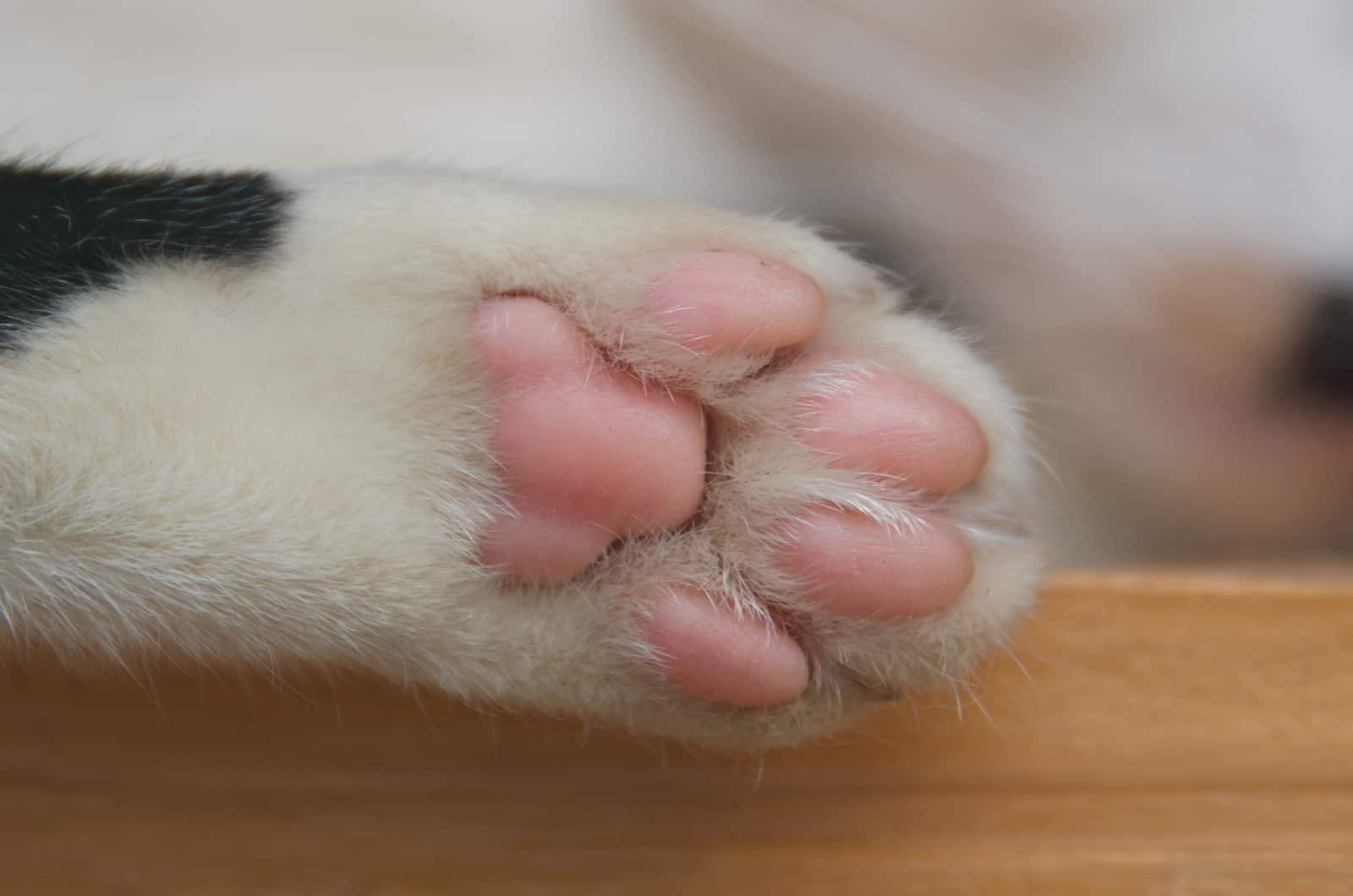
If you notice hard growth on cat paw pad you shouldn’t worry, but you can consult with your vet about the condition in order to prevent more serious problems.
The cutaneous horn in cat’s paw pads isn’t painful for cats in most cases. However, if you notice that your cat is in pain or discomfort, then you should contact your veterinarian to see what you should do.
If you notice other side effects along with horned paws such as vomiting, diarrhea, fever, mouth bleeding, breathing difficulties, loss of appetite, or similar, then you should immediately take your cat to the veterinary clinic as these are the symptoms of serious diseases.
Such diseases include Papillomavirus Infection, Feline Leukemia (FELV), and Squamous Cell Carcinoma. After the vet finds the underlying cause, they’ll be able to give your feline a proper treatment.
Moreover, if the horned paws don’t hurt your cat you don’t have to do anything about them. On the contrary, if they’re painful and causing discomfort, then you should consult with your vet about trimming the hard growth or undertaking surgical removal, if necessary.
I hope that you’re more familiar with this topic after reading this article and that you’ll know what to do if such a thing ever happens to you and your feline. Still, I hope you won’t have to deal with it!
Related Articles:
Dealing With Overgrown Cat Claws – What You Need To Do

